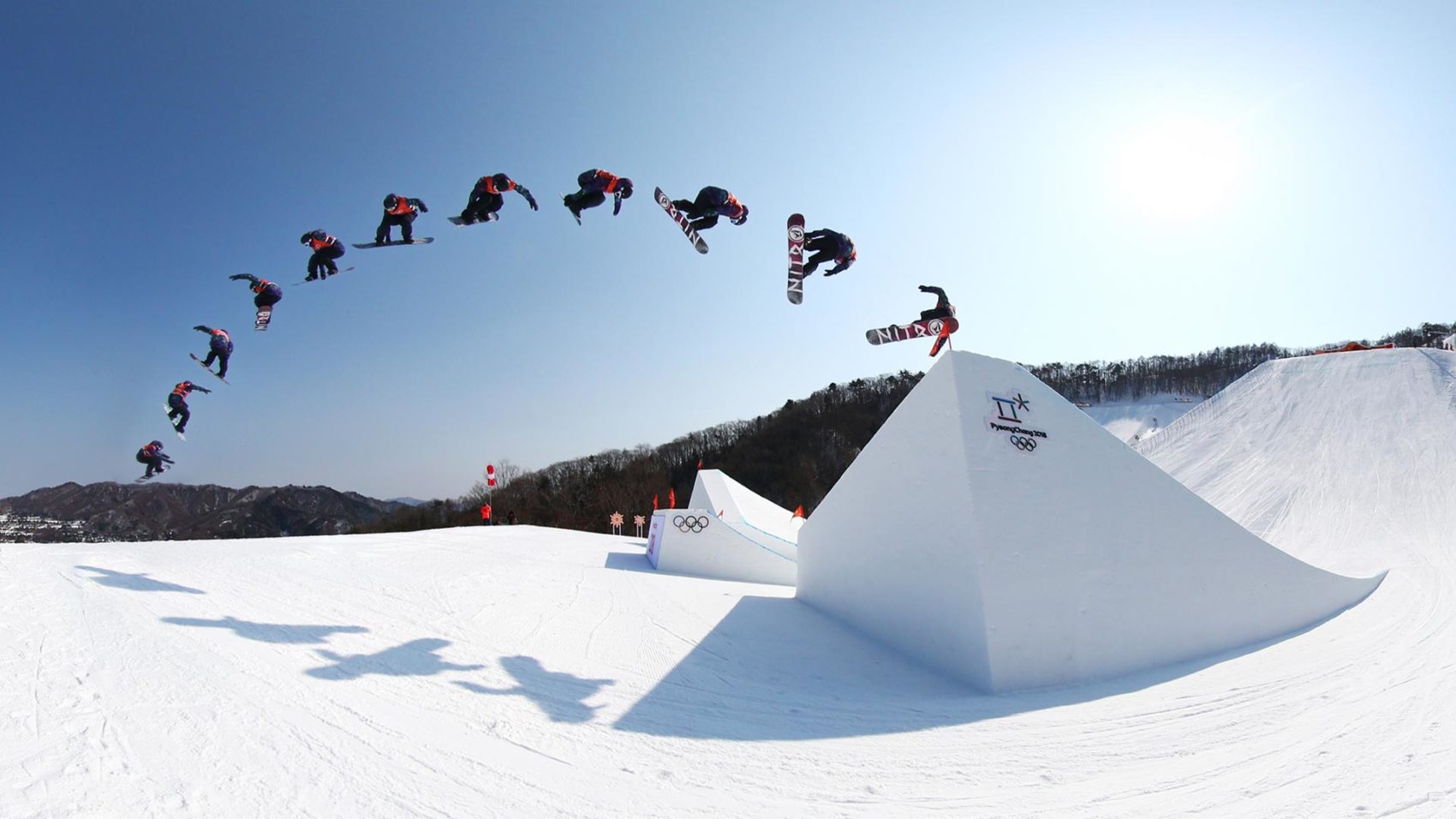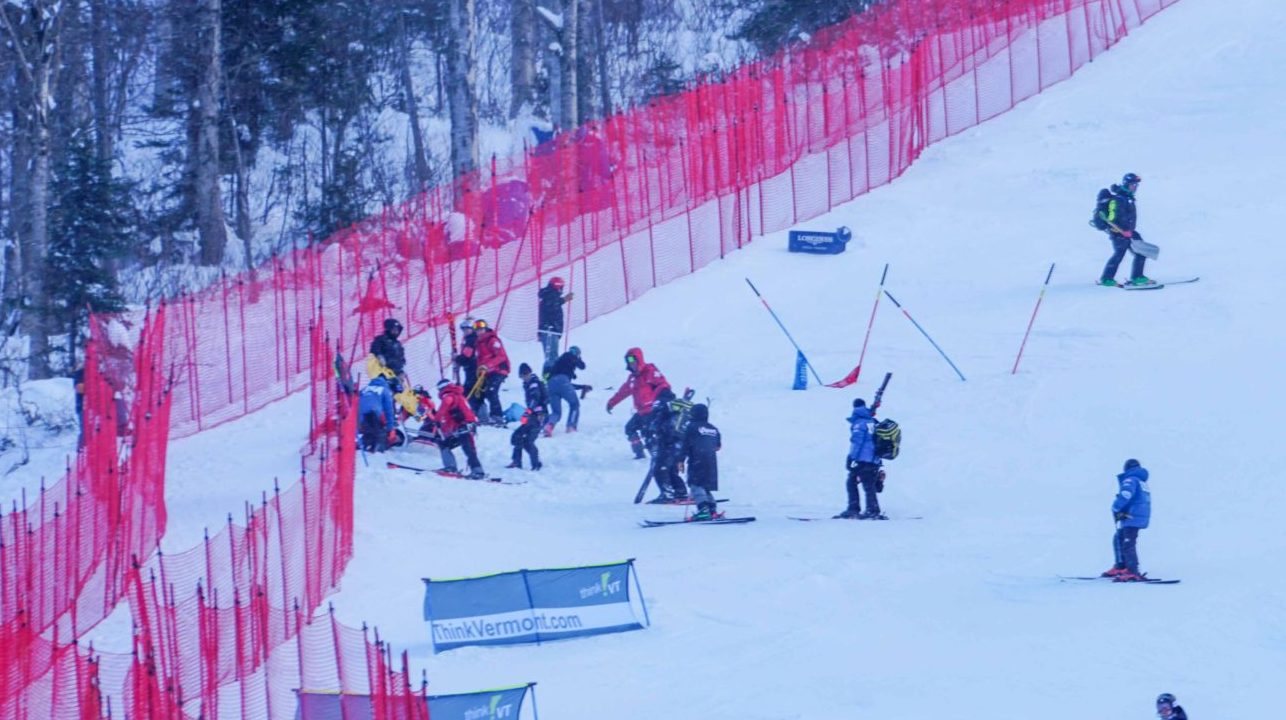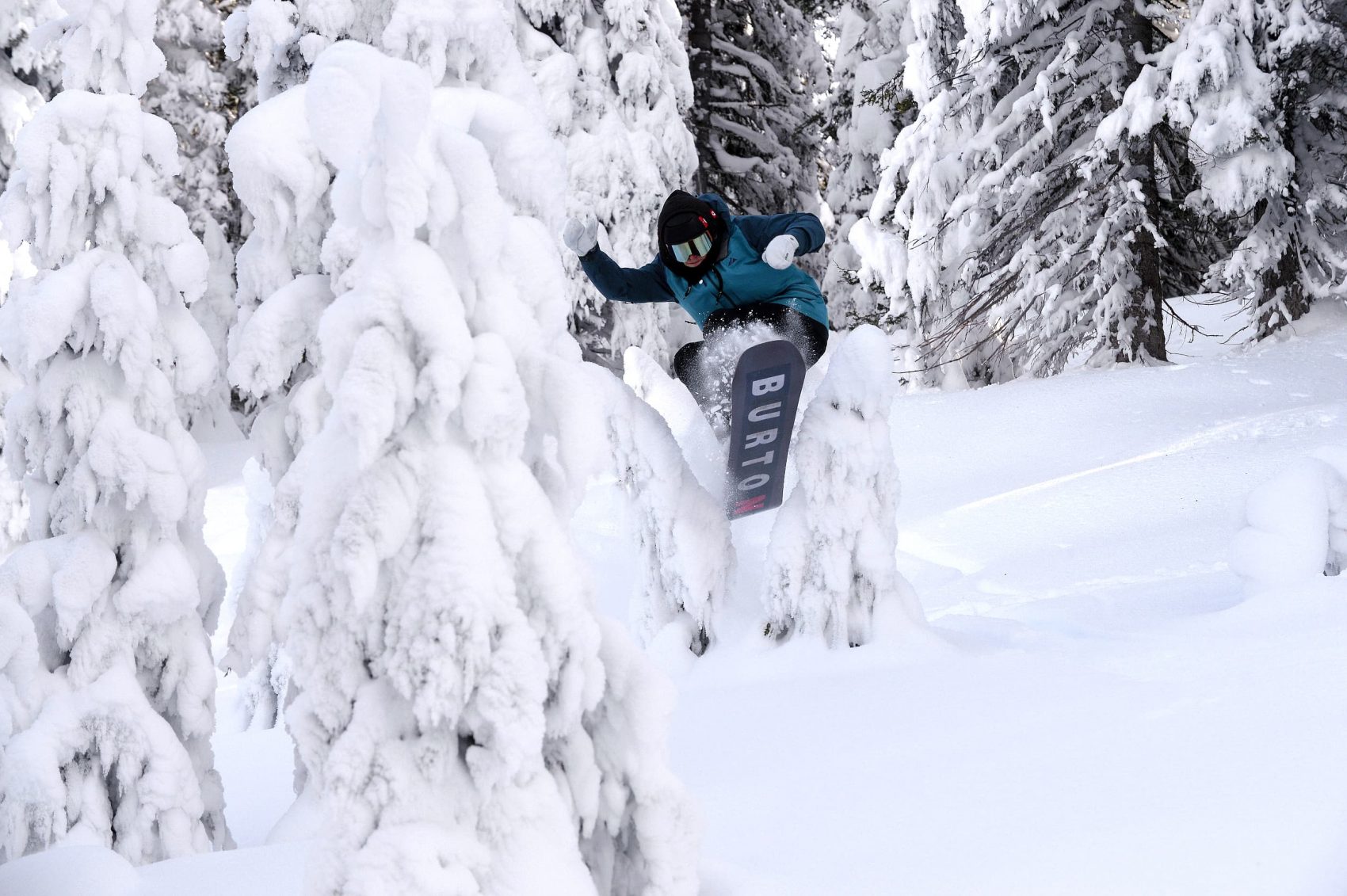
In this week’s edition of Origins, we will take a long look at the history of snowboarding. If you missed last week’s Origins on U.S. Avalanche Mitigation you can check it out here:
- Related: Origins: U.S. Avalanche Mitigation
The cousin of surfing and skateboarding, snowboarding molded the sport to a whole new medium, snow. Sliding down snow on one plank of wood does not have the same depth of history that skiing does, but that does not take away how special its story is.
Our story begins with Sherman Poppen, the inventor of the “Snurfer”. Poppen took two kids’ skis and bound them together to create a surfboard-like platform. Originally, the idea was meant for his two kids, but he quickly found himself riding down hills near his home in Michigan. He began reworking his initial design and came up with a single wooden plank that was wider and shorter than traditional skis and had a rope at the front to hold on to while riding. Sherman’s wife decided that combining the words surf and snow together as Snurfer for the product name.
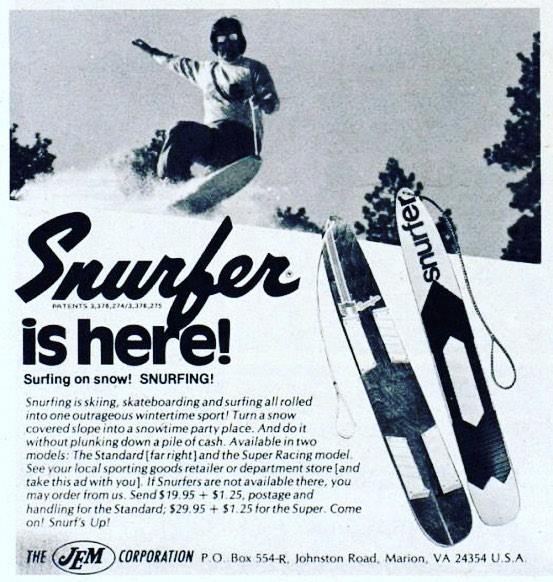
Sherman patented the design for a “Surf-Type Snow Ski” in 1966 and quickly licensed the product to the Brunswick Corporation for production. He worked closely with Brunswick in the production of the first Snurfer. Made from bowling lane laminated wood, the product was initially sold as a novelty item. It quickly gained popularity as many saw it as a new form of snow activity. The Snurfer was a hit; selling well over one million units in its lifetime. While it might have not been the first of its kind, it was the first commercial snowboard-like product.
Inspired by the Snurfer and himself riding down hills on metal trays, Dimitrije Milovich began producing his own boards for friends. In 1972, he began to tinker with new ideas that would form the first boards that resemble modern-day snowboards. One of these radical new ideas, iron edges, became an essential part of snowboards. His company, Winterstick, is still making snowboards to this day.
The issue snowboarding pioneers quickly encountered was that ski resorts prohibited them from riding within their boundaries. They were forced to go into the backcountry to test and improve their inventions. Ski resorts claimed that their insurance did not cover snowboarding and thus they were prohibited from being used. It was in 1977, that Milovich acquired written confirmation from Petit-Morey and Kendall, a major insurance broker for resorts in the United States, that snowboarding was in fact covered under ski resort insurance. This news changed the ball game.
In 1976 and 1977, Tom Sims (founder of Sims Snowboards), Mike Olson (founder of Gnu Snowboards), and Jake Burton (founder of Burton Snowboards) began making their own snowboard designs. These men had drastically different approaches to making their boards. Burton modified Snurfers, Olson created boards out of pine planks, and Sims made boards with aluminum bottoms.
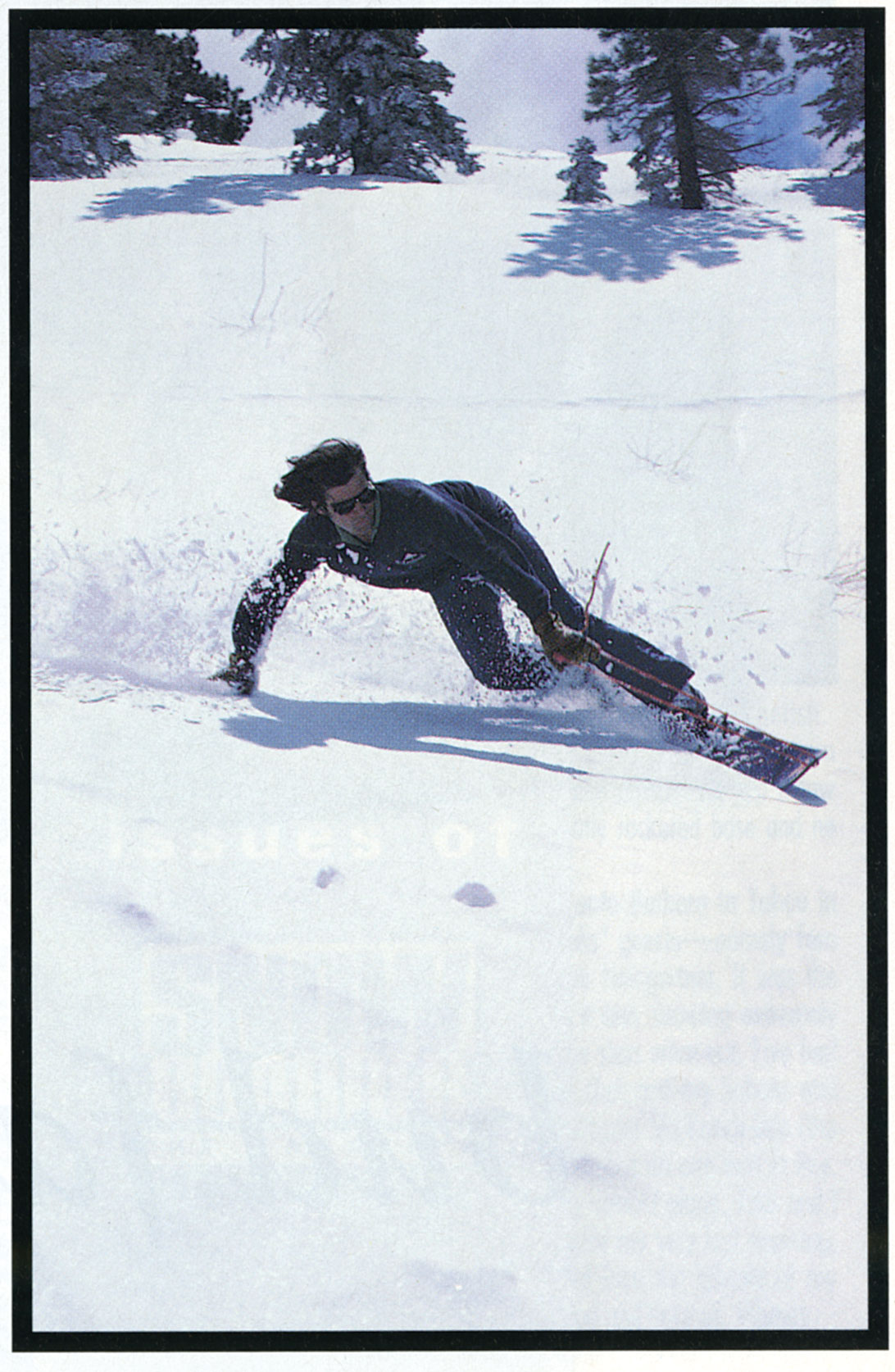
A constant race formed between the three men (especially between Burton and Sims) to create the best boards. In 1979, Sims began to use fiberglass as the base of snowboard construction. During the same time, Burton was experimenting with ptex technology as a way to create a better gliding surface. These men who were also competition rivals took snowboarding to the next level. Their companies became the staples of snowboarding for decades. Their constantly changing designs eventually saw snowboard shapes become standardized across the industry. The focus for improvement then shifted to the bindings.
Recent improvements to binding technology have created step-in-bindings. Burton, the pioneer of this technology changed the way snowboards get onto their board. No more waiting for your friends to strap in, all they need to do is step onto the binding pad and go. The rate of improvements seen in snowboarding is incredible and a testament to the popularity of the sport and its participants.
Competition wise, events were held as early as the Snurfer. These early events are where Tom Sims and Jake Burton first competed against each other. Some say that their competition’s actually helped fuel the men’s drive to create better boards. We can all thank their competitive spirit for helping rapidly improve the industry. These events eventually graduated throughout the years as snowboard technology improved. The sport saw its men’s and women’s Olympic debut at the Nagano Games in 1998 with giant slalom and halfpipe. The events were extremely successful and were brought back for the Salt Lake Games with parallel giant slalom and halfpipe. Snowboard cross (one of my personal favorite events) was added at the Turin Games. Slopestyle was added to the 2014 Sochi Games. Most recently, big air was added to the 2018 Pyeonchang games.
Thanks for reading the Origins of Snowboarding! Stay tuned for next week’s edition!
